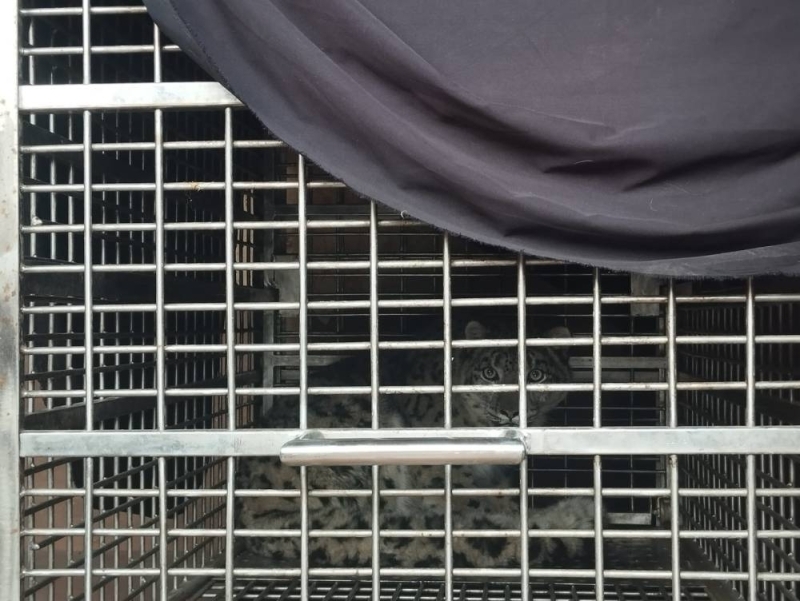
KATHMANDU, JANUARY 25
On January 23, locals in Charghare, Urlabari Municipality-1, saw a Snow Leopard, also known as 'Mountain Ghost,' which is found above 3000 metres and is listed as a vulnerable animal by the Nepal Government.
Even in the mountainous region, snow leopard sightings are extremely uncommon. People wait for years to catch a glimpse of the ghost; however, the sudden sighting has surprised the conservationists.
Snow leopards live at elevations ranging from 3000 to 6000 metres, according to Govinda Prasad Pokharel, Conservation Officer at the National Trust for Nature Conservation. Urlabari is situated 146 metres above sea level.
"Even the thought of seeing a snow leopard at such a height is unthinkable," he said.
However, all of it started early on January 23, when residents of the Charghare settlement in Urlabari Municipality-1 near the woods noticed a "Peculiar-Looking" creature. Worried that it might attack people or livestock, they even threw a few stones at it in an effort to chase it away. The big cat escaped the police's grasp, despite their best efforts.

According to Pokharel, veterinarians from the National Trust for Nature Conservation (NTNC) in the nearby Koshi Tappu Wildlife Reserve darted and captured the animal, which was eventually identified as a snow leopard.
However, Dr. Madhu Chetri, a conservation biologist with a PhD in snow leopards, stated, "It is unusual for humans, but not for snow leopards, and it has happened for the first time in Nepal."
According to Dr. Madhu, male cubs are typically separated from their mothers between the ages of 21 and 24 months to define their territory. They travel long distances to mark their territory and find a suitable location.
"For 12 months, male cubs stay with their mother, and after 21 to 24 months, they begin wandering for their territory. It might have lost its way while pursuing its area and was observed at such an altitude," he said.
"Male cubs can also cover 50 to 60 km in a single day. The vertical distance between the Kanchenjungha corridor and Charghare, Urlabari, is 100 kilometres. Consequently, I do not think it is wholly out of the ordinary for them."
Similarly, people have begun to speculate whether this is due to climate change. When THT questioned Pokharel and Chhetri about it? They completely refuted such claims, stating, "Everything is not a result of climate change."

Dr. Madhu, who is also head of the Gaurishankar Conservation Area Project, stated that "snow leopards travel throughout the Kanchenjunga corridor from Nepal to India and Bhutan," adding, "This could be because the big cat lost its way or travelled the wrong way after leaving its mother.
He further said, "This could also be due to animal trafficking. Someone must have kept it caged, but it escaped and was discovered in Urlabari."
Pokharel also claimed, likewise, that Urlabari is near the Indian border. "Animal trafficking appears to be a plausible explanation for its discovery."
However, Pokharel and Chetri both stated that one can only express the cause after conducting thorough research and study.
"This incident should be investigated empirically to determine the cause of the event," they stated.
Meanwhile, Director General of Department of National Parks and Wildlife Conservation under Ministry of Forests and Environment Dr. Sindhu Prasad Dhungel said that it has been brought to the Central Zoo Jawalakhel, Lalitpur.
"I saw it from a distance; its front leg appeared bruised; therefore, we brought it to Kathmandu because it is at a favourable height," he told THT.
"It is under the supervision and care of our veterinarian. We will release it back into its natural habitat once it has recovered its health. Transferring it in its current state will be dangerous for the subadult cub."
The current snow leopard population ranges between 300 and 400. However, accurate information has yet to be confirmed. According to snow leopard researcher Madhu, it can be found in 12 countries worldwide, including Nepal.













